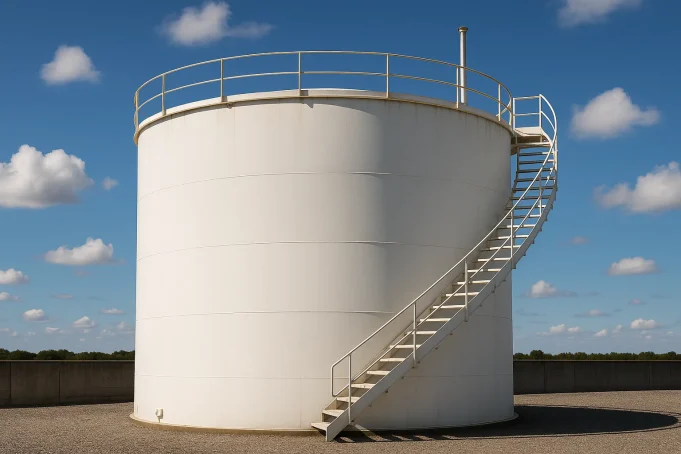Water storage tanks have become a critical part of water security for households, farms, and businesses across Southern Africa, especially as water scarcity becomes a growing challenge.
In hot and humid regions, however, maintaining these tanks takes extra care. Without proper maintenance, water quality can decline, and water tanks can corrode prematurely. Here are essential maintenance tips for Southern Africa’s demanding climate.
1. Protect Against Corrosion
Humidity, high temperatures, and seasonal rain can accelerate rust and corrosion in steel water storage tanks, especially along seams and welds.
Tip: Make sure your tank has a high-quality anti-corrosion coating, both inside and out. Epoxy-coated or galvanized water tanks offer better resistance in tropical conditions.
Regularly inspect for signs of rust, blistering, or paint flaking, especially around inlet and outlet valves. If you spot corrosion, sand it down and apply a suitable rust treatment or repaint the affected area immediately.
2. Inspect Seals and Joints
Rubber gaskets, seals, and connectors are vulnerable to expansion and contraction caused by heat. Over time, this can lead to leaks or contamination in your water storage tanks.
Tip: Inspect seals and gaskets quarterly. Replace any cracked or perished parts, and make sure all joints remain tight and watertight. Use UV-resistant sealants and fittings where possible.
3. Clean the Interior Annually
Sediment, organic matter, and mineral deposits build up inside tanks over time, especially in open or poorly filtered systems.
Tip: Drain the tank at least once a year for a full internal inspection and clean. Use a high-pressure hose and a soft brush to scrub the inner walls and avoid using harsh chemicals that might leave residues. If the tank is used for potable water, rinse thoroughly before refilling.
4. Prevent Algae and Bacterial Growth
Warm, stagnant water is ideal for algae and bacterial proliferation. This not only affects water taste and odour but may make it unsafe for use.
Tip: Keep your tank covered at all times with a well-fitted, opaque lid to block sunlight. Install a first-flush diverter if your tank collects rainwater, preventing organic debris from entering. Regularly clean tank inlets and screens to keep out insects and leaves. For drinking water, consider adding a safe water treatment or filtration system.
5. Monitor for Structural Integrity
The weight of water, shifting ground, and temperature fluctuations can cause tanks to warp or develop hairline cracks.
Tip: Place your tank on a solid, level foundation that is protected from flooding. Check for any signs of bending, stress points, or changes in tank shape, especially after heavy rainfall or extreme heat waves. Anchor tanks securely if your area is prone to strong winds.
6. Check Overflow and Drainage
Poor overflow management can cause pooling at the tank base, leading to rust or tank foundation damage.
Tip: Check that overflow pipes are free-flowing and directed away from the tank base. Consider extending them to a soak-away pit or water garden.
Final Thoughts
Proper maintenance of steel water tanks in hot and humid climates results in their long-term durability and overall water safety. With regular inspections and timely care, your tank can withstand Southern Africa’s tough conditions for many years.


























